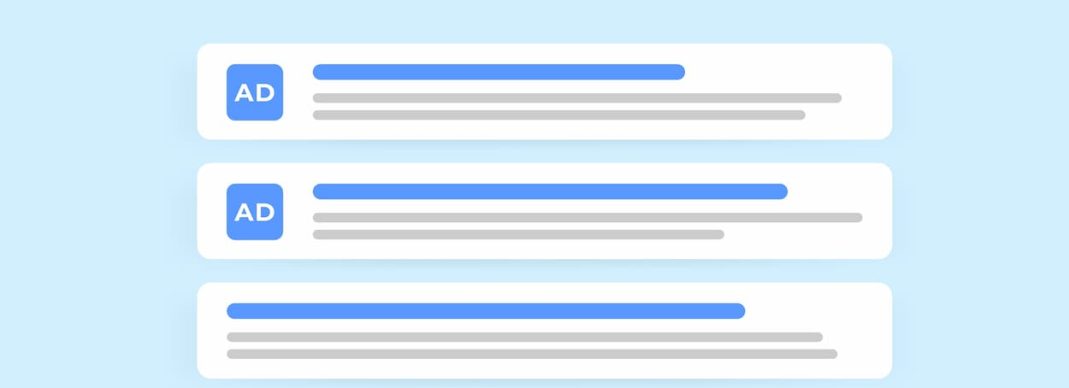There are many ways one can improve the quality of their Google ads; one of them is through assets, or, as they were previously known, Google Ads Extensions. These are small bits of additional information that can be added to your ads to give users additional information without occupying the limited space in your ad titles or descriptions. There are currently 14 different assets available on Google Ads, which can be overwhelming, but you should just use assets that you find relevant to your business or ad campaign.
Image Assets
As their name suggests, these are images you can add to your ads. Using high-quality and relevant images that complement the ad and landing page will allow you to stand out over the other ads. Image assets help increase visibility, click-through rates, and engagement. If you aren’t sure what image to use, you can always experiment with different images (A/B testing) and see which one gives you the best results.
Images must be in PNG, JPG, or static GIF resolution, and aspect ratios can either be square (1 x 1; 1200 x 1200 recommended) or landscape (1.91 x 1; 1200 x 628 recommended). The square aspect ratio is necessary, while landscape is optional. We recommend that you use images that are simple, uncluttered, don’t have white backgrounds (it is best to use images with no background), and eye-catching.
Business Name Assets
These assets will display your business name next to your ad. Make sure your business name is consistent and has the same capitalization across your website, ads, and other platforms. Having your business name next to your ads helps with brand recognition and helps build trust with users.
Business Logo Assets
Adding your business logo to your ads can enhance your brand’s visibility. You should upload a clear logo that is recognisable and consistent with the one used on your website. Make sure your logo is square and recognisable in other dimensions, especially small ones.
Sitelink Assets
Sitelink assets let you add links to other parts of your site to your ad. These help improve the user’s navigation by helping them find what they are looking for. You should add links to high-traffic pages or pages that could be useful for the user, such as the contact page, products, product categories, services, and homepage. It can also be used to highlight promotions or new products, so you should make sure to update your site links regularly.
Headline and Description Assets
These assets allow you to add three headlines and two descriptions to your ad campaigns. These are in addition to the ones you already have in your ads. These are a great way to save time when you have temporary headlines or descriptions you would like to add to your campaigns, such as promotions and date-specific content. By using these assets, you avoid the hassle of editing all your ads one by one to apply new headings and descriptions. Google Ads also gives you the option to schedule your content, so you won’t have to worry about removing the assets when they are no longer relevant.
Callout Assets
Callout assets allow you to let users know about special offers or benefits such as free shipping, 24/7 customer service, fast delivery, or easy returns. These will appear with your ad, adding information to it and encouraging users to visit your page.
Structured Snippet Assets
With structured snippets, you can highlight what your business offers. These not-clickable assets will add information to your ad and should inform the user of the types of products or services that are offered.
Call Assets
By adding a call asset to your ad, users can contact you directly from the ad, which should be a requisite for any company that depends on phone inquiries from mobile users. By using this asset, users no longer have to visit your site and look for your business phone number and can instead call your business with one click.
Lead Form Assets
These assets allow you to capture user information from the ad by allowing them to submit their information in a form directly from your ad. This is great for companies that depend on leads and do not require users to visit their website.
Location Assets
Location assets display your business address and are great for local businesses that want to bring people to their physical location. These assets will appear at the top whenever people search on Google Maps. Make sure your location asset and Google My Business address and information are the same.
Price Assets
Price assets will display your products or services with their prices, which allows users to make an informed decision before clicking. It also allows users to go directly to the product page, so you should add price assets for your most popular products or products you are trying to promote.
App Assets
If your website also has an app, you should use this asset in your ads. They allow users to download your app with one click from your ad. You can also add a small description to the asset to encourage users to download your app.
Promotion Assets
Promotion assets can display special offers or discounts, allowing you to increase traffic whenever you have a sales period or event. You can set these assets to appear for a certain period and add a small description to them. Promotion assets can also include coupon codes for people to use on your page.
There are a lot of assets for businesses to use when advertising on Google. We recommend that you start by using those assets that you find necessary for your business. You can then start testing out other assets that you think could be useful to your ad performance. If you have any questions or would like to learn more about Google assets, please contact us.

